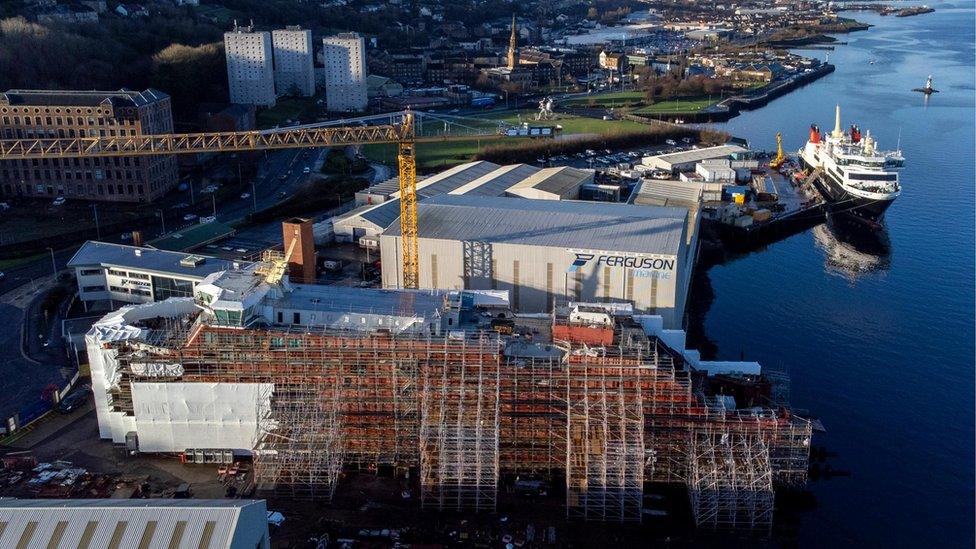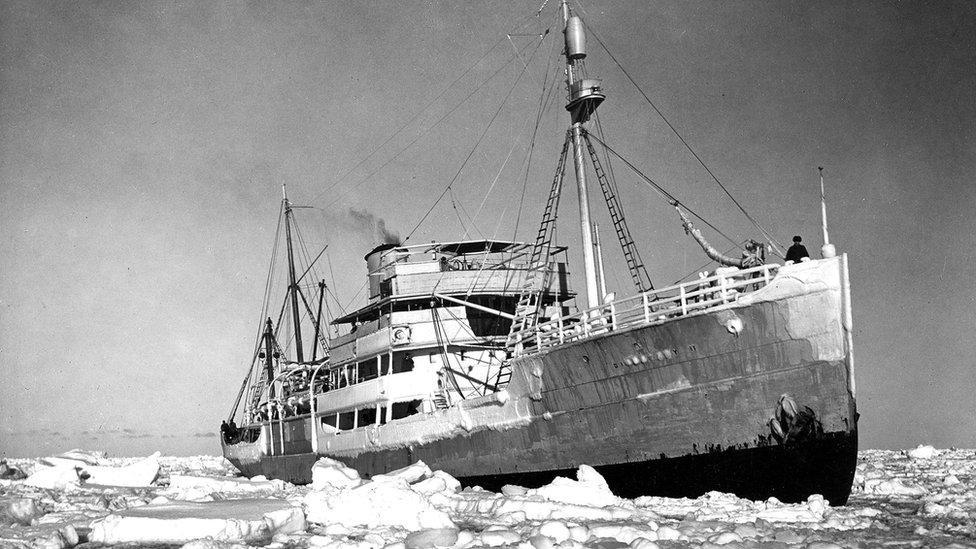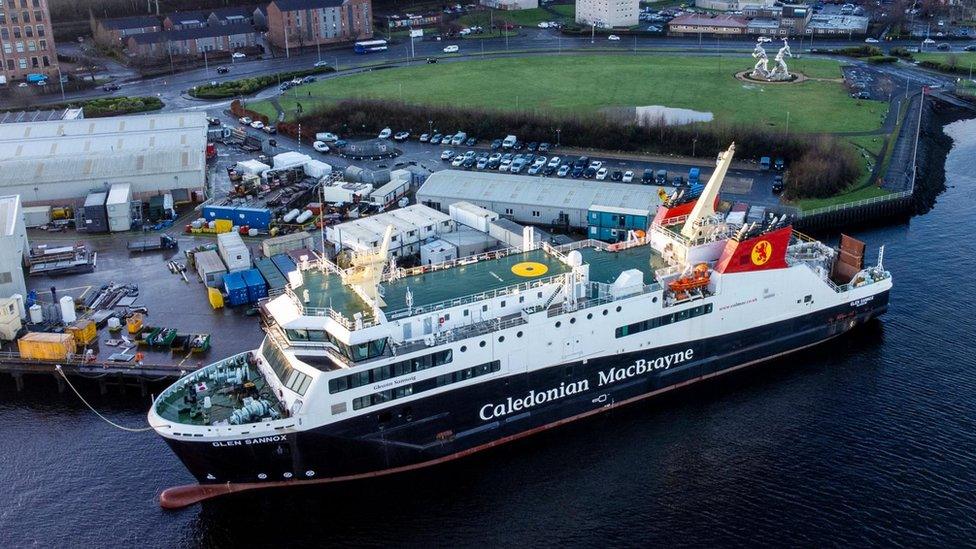'Lessons learned' as Ferguson ferry costs rise again
- Published

The boss of the nationalised Ferguson shipyard has said lessons have been learned, as further costs and delays to two new Calmac ferries were confirmed.
MV Glen Sannox is now due for handover in late May or June, six years late, and cost have risen by up to £7m.
The second ship MV Glen Rosa is now due in September next year but Ferguson chief executive David Tydeman said he hoped it would be three months earlier.
He told MSPs: "We have learned all the lessons from Glen Sannox."
Construction of the two vessels, the first ships ever built by a UK shipyard capable of running on liquefied natural gas (LNG), has been plagued by design challenges since the order was placed in 2015.
Steel fabrication outpaced detailed design work, leading to errors and reworking, with repeated delays and cost increases that continued after the Port Glasgow yard fell back into administration and was nationalised in 2019.
The yard's former owner, Jim McColl, blamed ferries procurement agency CMAL for putting a poorly-developed concept design out to tender, and then interfering in the design process - but CMAL rejected that claim, saying problems arose due to "catastrophic" contractor failure.
Mr Tydeman told MSPs on the net zero and transport committee that the LNG technology was well-established but had taken up a "disproportionate" amount of the effort to complete the ships.
He said the latest delays were because a supplier was unable to provide essential LNG pipework when required, and the yard had been forced to work directly with a subcontractor to get the pipes fitted.

The second ferry Glen Rosa, still on the slipway, is due to be launched in April
A resulting two-month delay in the handover of Glen Sannox meant the cost to complete the ship will be up to £149.1m, he earlier confirmed in a letter., external
The cost to complete Glen Rosa could be up to "maximum" of £150m but Mr Tydeman hopes to shave £10m off that figure by "capturing" learning from the first ship.
He said: "We are in a much stronger place on the second ship, we have learned all the lessons from Glen Sannox.
"I hope it is a delivery challenge, putting the ship together rather than learning and engineering and finishing the design work that we've had to do on Glen Sannox."
The latest cost figures do not include money spent on the ships prior to nationalisation, which take the total cost of the ships to around £400m if written-off government loans are included. The contract price was £97m.
Future opportunities
Despite the problems with Glen Sannox and Glen Rosa, Mr Tydeman said the world shipbuilding market was buoyant and there were potential opportunities for the Inverclyde shipyard.
He listed areas such as offshore wind support ships or crew transport vessels, as well as sub-contracting on military orders.
In the short term, the yard is hoping to secure a contract for seven smaller all-electric vessels for CalMac which would provide a steady flow of work in the coming years.
A request for £25m of Scottish government funding for new equipment, which would make the shipyard more productive, was turned down last year, but Ferguson Marine executives said they would present a revised request shortly.
Mr Tydeman said at the moment there would be a "small premium" in buying the small ferries from a Scottish shipyard compared with cheaper yards in Europe.
If all goes well with the commissioning of the LNG systems on Glen Sannox, he said he hoped it would be delivered by late May or early June.
West coast ferry operator CalMac will then need to conduct its own sea trials so the ship, destined for the Arran route, is unlikely to be carrying passengers until August or September.
The first of four ferries being built by a Turkish shipyard, which have smaller cargo-carrying capacity and more conventional propulsion systems, is due for delivery in October.
Related topics
- Published26 November 2023

- Published2 February 2024
